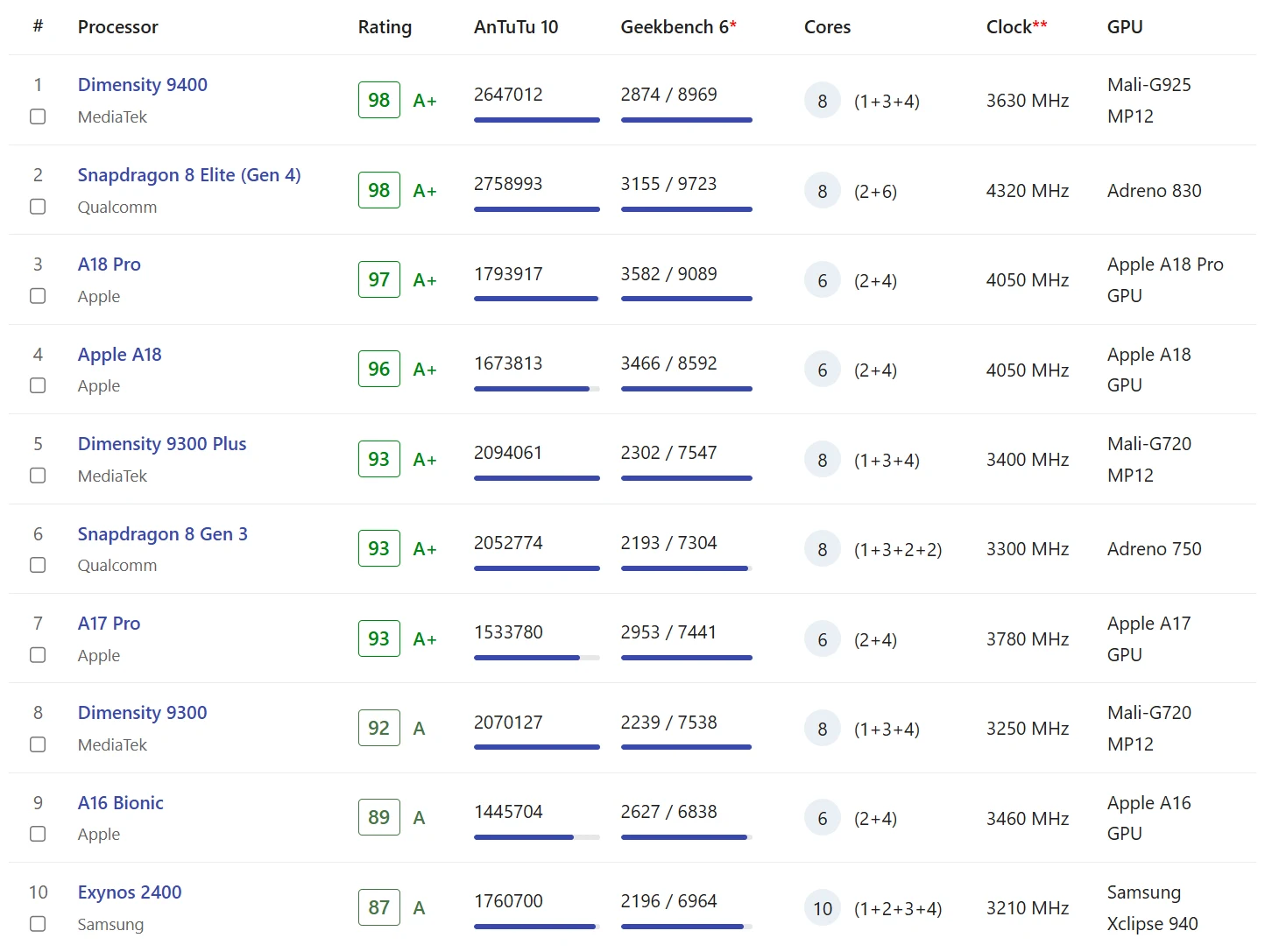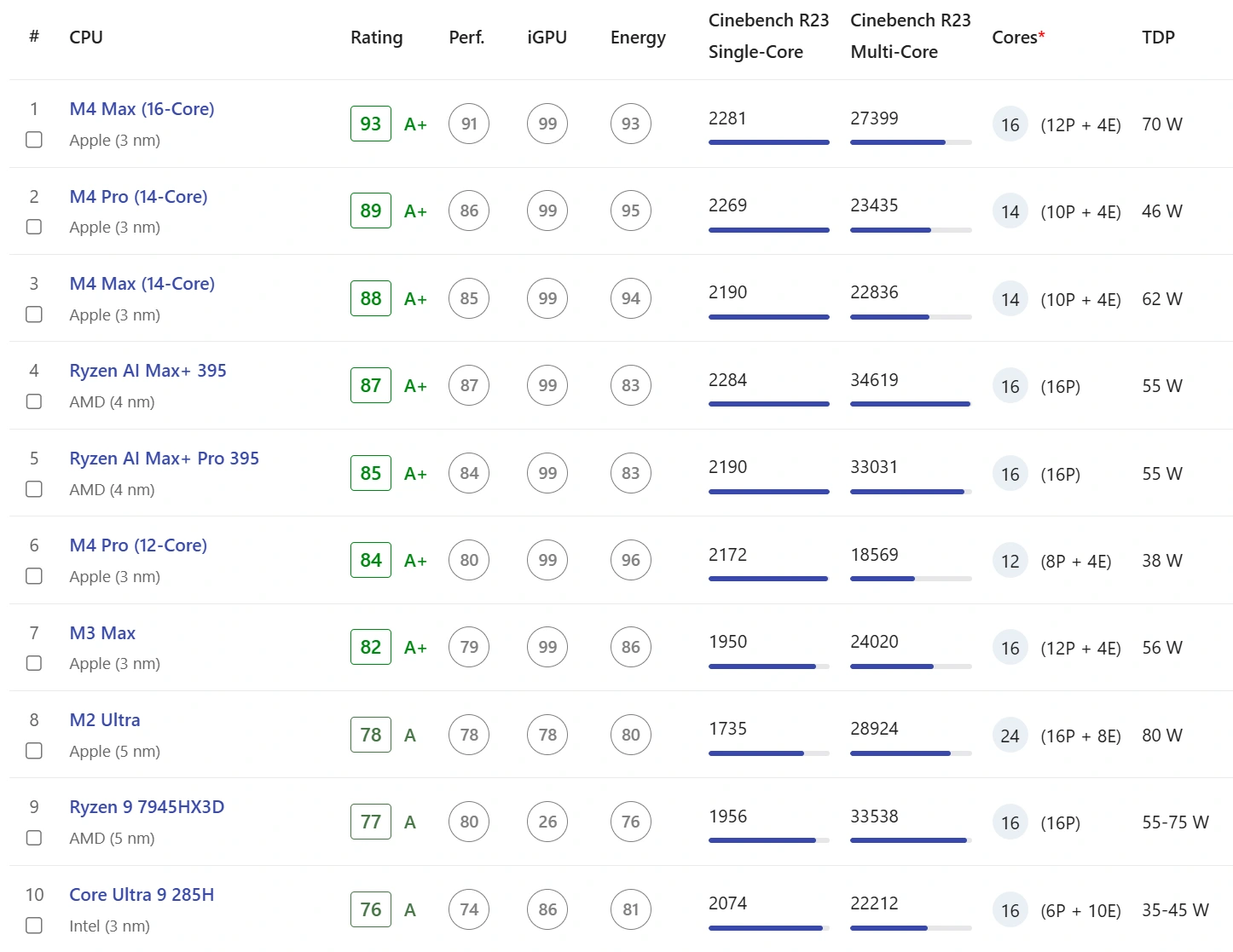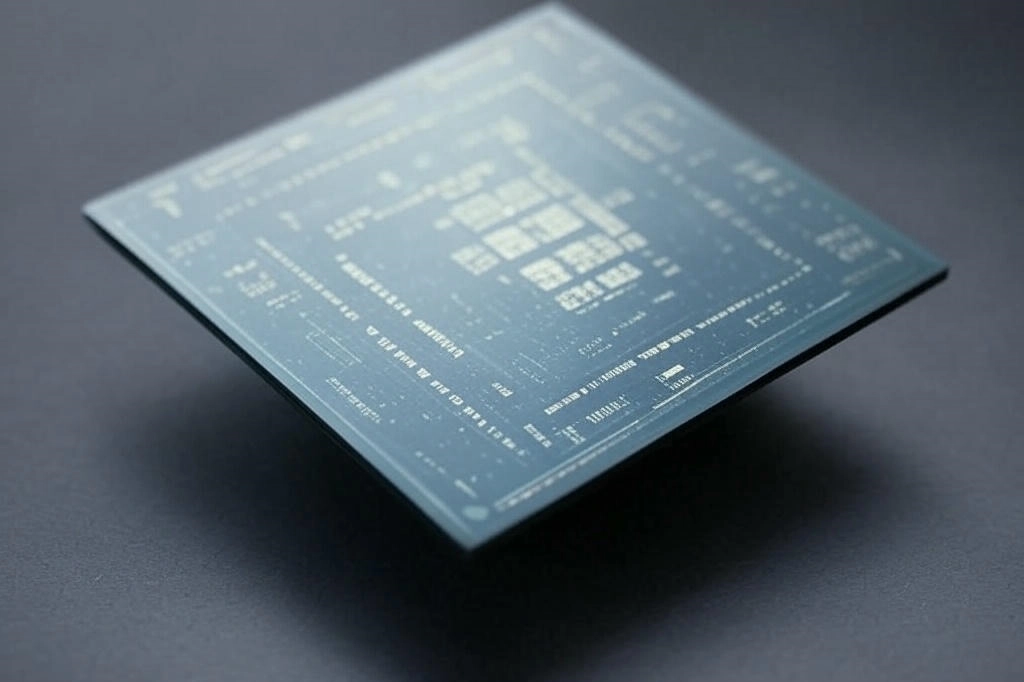1. Global Chip Rankings for 2025
In 2025, the global chip market continues to be driven by cutting-edge technologies that power everything from smartphones to advanced medical devices. Below is the ranking of the top 20 global chips, highlighting their model name, performance score (benchmarks):
For laptops:
 Figure 1. Laptop chip rankings (2025). NanoReview. Retrieved February 20, 2025
Figure 1. Laptop chip rankings (2025). NanoReview. Retrieved February 20, 2025
For smart phones

Figure 2. smart phone chip rankings (2025). NanoReview. Retrieved February 20, 2025
2. Future Prospects in the Low-Vision Field
The future of low-vision technology looks exceptionally promising as chip technology continues to evolve. With advancements in image processing, voice recognition, and artificial intelligence (AI), low-vision assistive technologies will become more precise and intelligent. Powerful AI and image processing chips will enable low-vision users to interact better with their environment, thus improving their independence and quality of life.

For example, smart glasses, electronic magnifiers, and braille devices will increasingly rely on these high-performance chips to enable real-time image processing and voice conversion, making it easier for low-vision users to access information and carry out daily activities. Additionally, AI-driven assistive technologies will offer enhanced environmental awareness, real-time navigation, and personalized feedback, helping low-vision users adapt more effectively to challenges in their daily lives.
Innovation in the low-vision field will not only improve visual assistance but could also integrate with augmented reality (AR) to provide a more enriched experience for low-vision users. With continued chip advancements, low-vision devices will offer more precise and convenient features, enabling users to live more independently.
3. Conclusion
As chip technology continues to innovate in 2025, the global competition in the chip industry intensifies, and the low-vision field will also benefit. Advanced chips will provide low-vision devices with powerful processing capabilities, making these devices smarter, more responsive, and more accurate. Whether it’s in image recognition, voice feedback, or device response speed, chip technology will drive the continuous development of low-vision assistive devices.
Looking ahead, breakthroughs in low-vision technology will not only improve the quality of life for low-vision users but will also bring more innovation to the entire assistive device industry. Through ongoing optimization and innovation, low-vision assistive technology will become more widespread and intelligent, enhancing the independence and quality of life for low-vision users.
If you want to read more practical articles, please visit www.zoomax.com
Frequently Asked Questions (FAQ)
-
What role do chips play in low-vision assistive devices?
- Chips provide the processing power needed for real-time image processing, voice recognition, and text-to-speech capabilities, enhancing the intelligence and usability of low-vision devices.
-
How do AI chips benefit low-vision users?
- AI chips help devices recognize images and voices more accurately, providing real-time feedback and adapting to different environments, which significantly enhances the user experience.
-
What chips are currently most commonly used in low-vision technology?
- Chips like the Apple M3 Pro, Intel Core i9-14900K, and Qualcomm Snapdragon 8 Gen 2, which are known for their powerful performance and AI support, are widely used in low-vision assistive devices.
-
What new applications might low-vision technology have in the future?
- With the advancement of chip technology, low-vision technology might integrate with augmented reality (AR) and virtual reality (VR) to offer low-vision users richer environmental awareness and interaction experiences.
-
What challenges do chips face in low-vision devices?
- Low-vision assistive devices need to balance high performance with low power consumption while continuously optimizing real-time image processing and voice feedback to ensure smooth device operation.
References
NanoReview. (2025, February 20). Laptop chips rating. NanoReview. Retrieved February 20, 2025, from https://nanoreview.net/en/cpu-list/laptop-chips-rating

